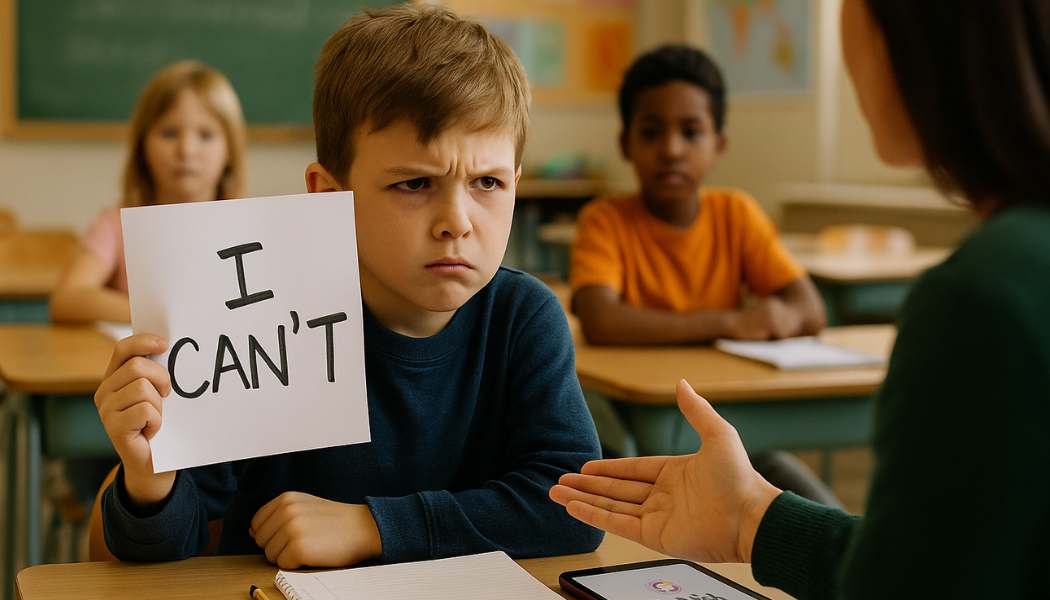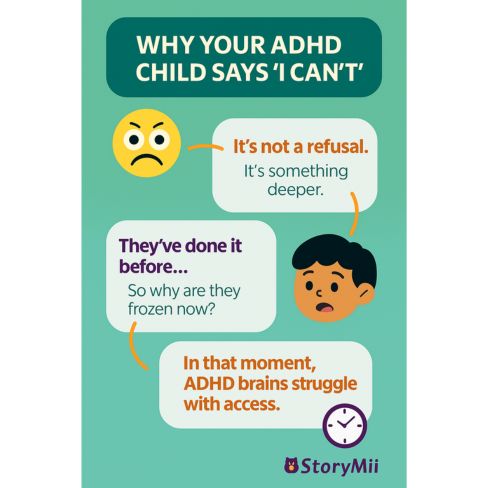Why "I Can’t" Isn’t Defiance—Understanding the Real Meaning Behind Kids’ Struggles
As parents or educators, you’ve probably heard a child say, “I can’t” with frustration—or even defiance. But for children with ADHD, anxiety, or other neurodivergent needs, “I can’t” often means something very different.
It’s not a refusal. It’s not laziness.
It’s not manipulation.
It’s a nervous system asking for help.
What “I Can’t” Might Really Mean:
- “I don’t know where to start.”
- “I’m overwhelmed.”
- “I’m afraid I’ll get it wrong.”
- “My brain won’t let me move forward.”
This isn’t about ability. It’s about access.
Executive function challenges, common in ADHD and autism, create a disconnect between a child’s intention and action. That moment of freeze? It’s their brain saying: I need scaffolding, not shame.
A 2017 study in Journal of Attention Disorders found that ADHD significantly affects goal-directed behavior, especially during transitions or unfamiliar tasks (Barkley, 2017). Executive dysfunction can make simple tasks feel impossible, even if they’ve done them a hundred times before.
What Helps Instead of “Yes You Can!”
- Break the task into micro-steps.
- Offer co-regulation before correction.
- Use collaborative prompts: “Let’s do the first part together.”
- Narrate your process aloud so they feel supported.
- Invite them in with compassion: “What’s making it hard right now?”
This strategy builds trust—and internal motivation.
Why Storytelling Can Rewire These Moments
At StoryMii, we designed our platform to meet the emotional needs of children exactly where they are.
Our AI-powered children’s story generator lets kids create, read, and share short stories that mirror their lives—silly, fantastical, or deeply personal. Whether it’s a child feeling stuck about their day or navigating a tricky emotion, turning that moment into a story builds:
- Cognitive flexibility
- Emotional distance from stress
- Confidence through creativity
When a child creates a story about a dragon who feels frozen—or reads one from another child—they see they’re not alone. They build empathy, agency, and hope.
Learning Happens in Small Steps
You’re not coddling when you support a struggling child. You’re creating access.
Every co-regulated moment builds confidence. Every story they finish—even if it starts from “I can’t”—becomes a win.
At StoryMii, we believe in scaffolding with love and stories. It’s what helps children feel seen, heard, and capable of trying again.
References
- Barkley, R. A. (2017). Executive Functions: What They Are, How They Work, and Why They Evolved. Guilford Publications.
- Thomas, M. et al. (2021). Emotional Regulation and ADHD in Children: Clinical Review, Child Psychology Quarterly.
- Centers for Disease Control and Prevention (2023). ADHD Facts
Suggested SEO Keywords:
- ADHD parenting tips
- executive function in kids
- neurodivergent child support
- emotional regulation strategies
- children’s story generator
- AI children’s book generator free
- story generator for kids
- best apps for neurodivergent kids


